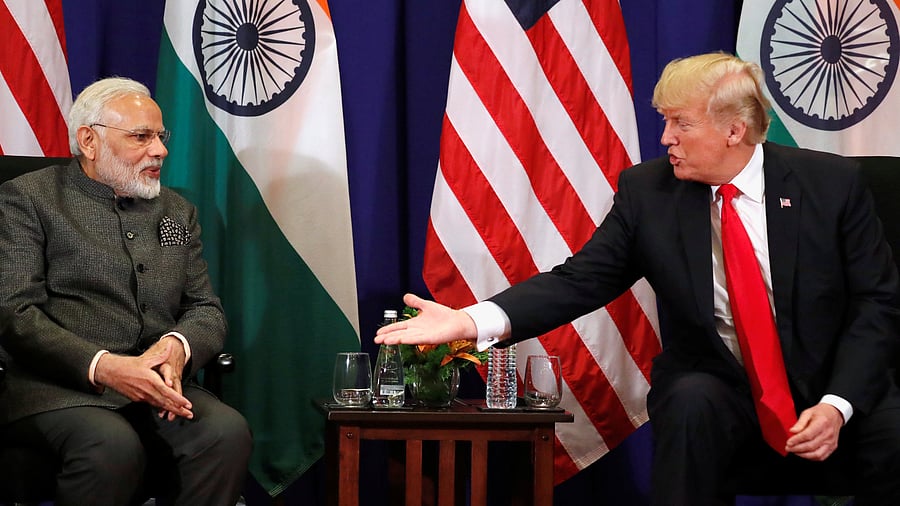
PM Narendra Modi (L) and US President Donald Trump (R).
Credit: Reuters File Photo
New Delhi: US President Donald Trump's doubling of tariffs on goods from India to as much as 50 per cent took effect as scheduled on Wednesday, escalating tensions between the world's two largest democracies and strategic partners.
Below is a timeline of how India, once seen as a frontrunner for a US trade deal, ended up facing steep tariffs after both sides failed to resolve disputes over agriculture and dairy, and New Delhi resisted pressure to halt Russian oil purchases.
February
Indian Prime Minister Narendra Modi agrees to work toward a limited trade deal by fall 2025 with the United States and expand the bilateral trade deal to $500 billion by 2030. He also pledged to boost energy purchases from the US.
March
Trade Minister Piyush Goyal visits Washington to meet Commerce Secretary Howard Lutnick and US Trade Representative Jamisen Greer. Later in March, US officials visit Delhi for talks.
India says negotiations are progressing well.
USTR annual report flags India's high tariffs, non-tariff barriers, data laws, and patent issues.
April
During Vice President JD Vance’s visit, both sides finalise the terms of reference for bilateral talks.
Indian officials say a deal could be signed before the July 9 deadline.
May
Goyal travels to Washington with lead negotiator Rajesh Agrawal for trade talks. India expects a favourable outcome is near.
June
US Commerce Secretary Howard Lutnick on June 3 says the US and India are making progress and a deal could be finalised soon.
Trump says a "big" trade deal with India is coming soon.
Indian officials tell Reuters that trade talks have hit a roadblock over disagreements on import duties largely over farm goods, dashing hopes of a deal ahead of July 9.
At a rally in the eastern Indian state of Odisha on June 20, Modi says he declined Trump's invitation to Washington.
July
Delegation returns to New Delhi without a breakthrough.
Trade Minister Piyush Goyal says on July 4 that India will not do trade deals to meet deadlines and national interest will be "supreme."
Indian trade delegation travels to Washington again in mid-July for the fifth round of talks, aiming to break the deadlock.
Modi tells India's parliament that “no world leader asked us to stop the operation,” rejecting Trump’s claims of brokering peace after a brief outbreak of hostilities with Pakistan.
No high-level outreach from Indian leadership.
On July 31, Trump announces to impose 25 per cent tariffs on Indian imports, warns of further 25 per cent additional tariffs for buying Russian oil.
August
On August 7, 25 per cent tariffs on Indian goods come into effect. Modi says India will not compromise farmers' interest despite "a heavy price".
New Delhi calls tariffs over Russian oil purchases "unfair", and vows to defend national interests.
Modi's first China visit in seven years is announced.
US trade delegation trip to New Delhi scheduled for August 25-29 is cancelled.
White House adviser Peter Navarro says India's oil buys funds Moscow's war in Ukraine.
Additional 25 per cent tariff on Indian goods comes into effect on August 27, lifting duties to 50 per cent, among the highest for US trade partners.